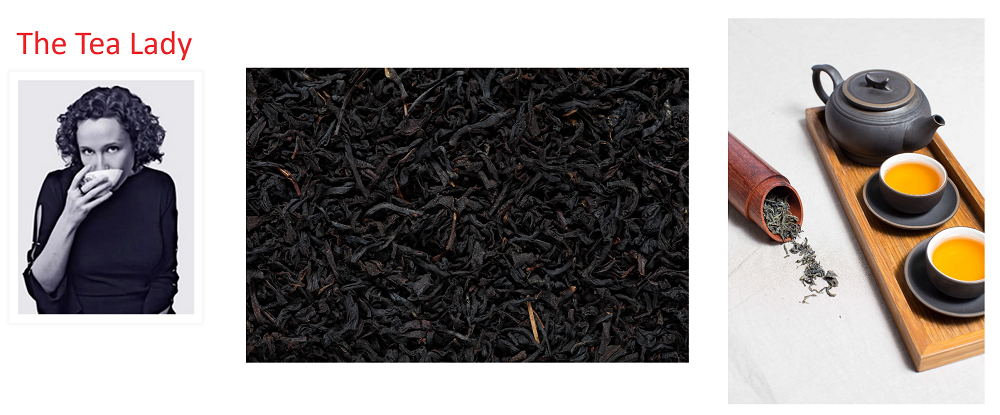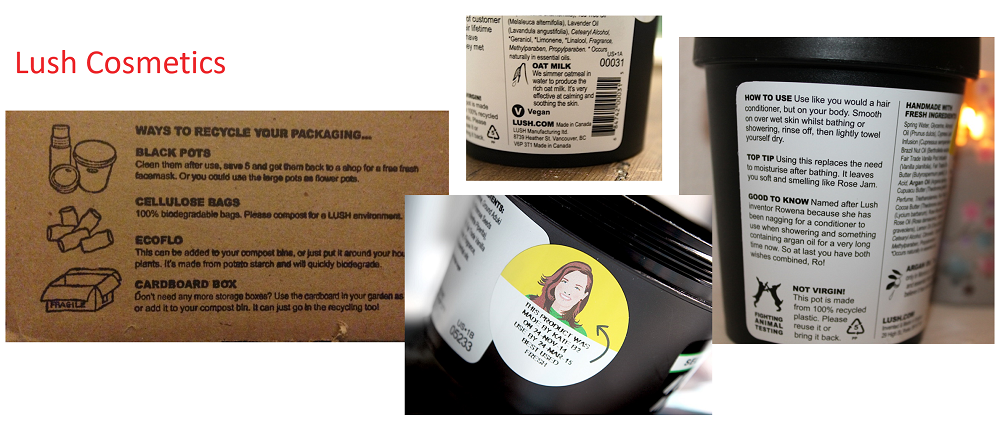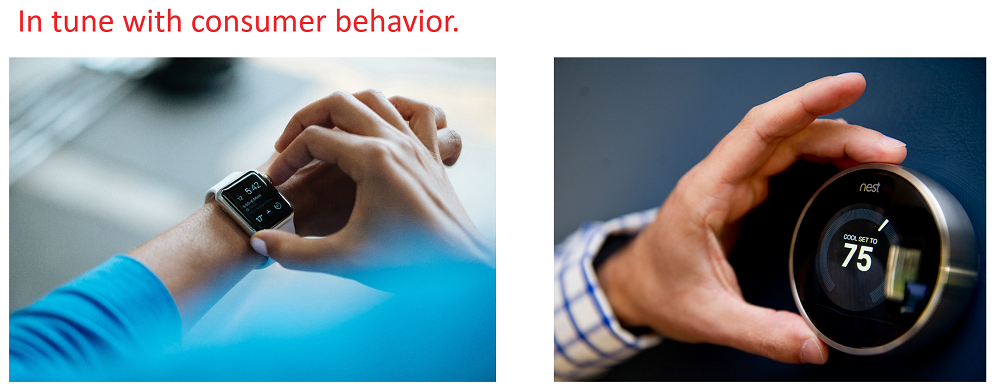
Last week, we participated in Food Matters Live, a notable industry event for food and beverage brands. Among the notable start-ups and legacy brands showcasing the goodness and innovation behind their products, I gave a presentation on brand purpose and the effect that it can have on customer relationships. While the content was centered around FMCG brands, the concepts can apply to all industries.
Here, I share with you the speech that I gave, along with some supporting images from the presentation itself.
Humanized brands are being revered nowadays. Customers are looking to associate themselves with brands as they do with their friends: as an emulation of their tastes, goals, and purpose. This brand affinity is more powerful than the brand loyalty that we’ve come to know and love, for it goes beyond a customer’s simple recognition that your brand offers the best value and stems into them knowing that your brand offers the best relationship.
And if the paradigm has shifted from product to service and from touchpoint to platform, then it has also shifted from mission to purpose. Why do you exist? What will you do with the life that you’ve been granted as a brand? The common saying is “to act to good purpose.” That’s because purpose stands for a practical result and effect, it stands for the reason for a brand’s existence.
To build (and subsequently communicate) said purpose, brands must focus on the qualities of what they do rather than the quantities. It sounds like a familiar concept, but do you really know that many brands that actively stand for it? The answer is most likely no. And this is because brand purpose takes time. You know, time — a group of fleeting moments that we never feel we have enough of. Time is what builds brands of good purpose. Time and quality.
And this can be seen across various other industries and aspects of our world. In fact, a lot can be learned about brand purpose from today’s leaders, the tea we drink, the cosmetics that we use, the travel agencies that plan our vacations, and the rise of the Internet of Things.
Leader-like Quality
As a leader, and as a brand, you have to feel like your smallest actions stand to affect the state, thinking, and direction of your customers as they would your teammates — as they would your friends. You are making recommendations, altering thought processes, and shifting resources around to serve a real-world purpose. Recognizing and remembering this will force you to think patiently and clearly about the actions that you take, the products that you build, and — quite possibly — the services that matter more.
 The truth is that the brand purpose race has nothing to do with size, size truly does not matter. You could be the underdog — a small startup team, for example — and your brand could precede you. It could be seen as one of the most influential your market has ever seen. On the other hand, you could be a large corporation that operates (and truly feels) like a nimble, family-owned brand.
The truth is that the brand purpose race has nothing to do with size, size truly does not matter. You could be the underdog — a small startup team, for example — and your brand could precede you. It could be seen as one of the most influential your market has ever seen. On the other hand, you could be a large corporation that operates (and truly feels) like a nimble, family-owned brand.
In both of the aforementioned cases, the small and the large, quality is what speaks. Your brand must act like a leader in your space regardless of size. And it can do so by acknowledging its purpose within its own market, both internally and externally.
Speaking of resources…
Tea-level Sourcing
Any brand can learn a lot from the tea industry. Naturally tied to the earth and soil, tea brands have recently begun to re-popularise loose leaf teas, especially from smaller non-industrialised farms. They are committed to sourcing their ingredients naturally, sustaining the farmers they work with, and — most importantly for this conversation — passing the knowledge on to their customers. These are companies that are putting a lot of effort into their brand purpose, as well.
 Rare Tea Company is a fantastic example. Run by the Tea Lady herself, Henrietta Lovell, the organization doesn’t simply sell teas — it personally visits its farmers around the world (whether it be in Sri Lanka, China, or Malawi) and buys from them directly. Generally, they pay a much higher price than your typical commercial tea bought in bulk.
Rare Tea Company is a fantastic example. Run by the Tea Lady herself, Henrietta Lovell, the organization doesn’t simply sell teas — it personally visits its farmers around the world (whether it be in Sri Lanka, China, or Malawi) and buys from them directly. Generally, they pay a much higher price than your typical commercial tea bought in bulk.
This is clearly communicated via their website. Upon visiting the page, you realize that it is full of honest stories regarding the purpose of the brand. It isn’t overwhelming and the “Shop” button is no different (not bigger or brighter) than the others. It is the simple communication of what still feels like one woman, the Tea Lady, explaining to you the power of tea and how her brand can transform a trade tainted by exploitation. And I quote: “By always sourcing for quality over price or volume, we know we are bringing you the best tea possible.”
And it’s working. People are accepting a higher price point for their teas because of the stories and interactions allotted by brands such as Rare Tea Company. Which goes to show that responsible actions and a clear interest in the well-being of those brands you work with can be translated into a powerful (and purposeful) brand message.
But how do you package that brand message?
Cosmetics-inspired Packaging
A brand acting to good purpose is one that portrays the honesty of someone whose products stand to alter someone else’s face. Regardless of whether they ignore the fact or not, cosmetics brands know this well.
Why should food or beverages be any different? They alter your body, affect your thinking, and can certainly cause you discomfort.
It’s time for food and beverage brands to take packaging notes from the cosmetics industry. What do cosmetics brands need to communicate? That they are animal-friendly, that their ingredients are pure, how to utilize their products, and why they should be chosen over their competitors.
Take a look at Lush cosmetics. They hit all of the core communication points throughout their packaging, touching on all elements of the journey from creation to disposal (or, in this case, recycling).
 Now, let’s look at these key points from a design perspective and apply them to the food and beverage industry. The answer for all of these is minimal, purposeful design.
Now, let’s look at these key points from a design perspective and apply them to the food and beverage industry. The answer for all of these is minimal, purposeful design.
The first thing that comes into play is the shape of the packaging: like any cosmetics tool, it must fit the action that it serves and be simple to use. Convenience is key.
But that’s not all. Along with that, you have the information that must be communicated by the packaging. This is where minimal design comes into play yet again. The information must not only be succinct, but it must go beyond the traditional listing of ingredients to also include an honest remark about its treatment of the environment and sourcing of its materials. This is further bolstered by a little snippet stating what to do with the packaging once you’re done with it.
All of this, the shape and the presentation of details, comes together to form a cohesive painting of your brand’s purpose. This effective collaboration is what exudes your brand’s personality and finds its place in your consumer’s value pyramid.
After the product, come the services.
Travel-sized Content
Travel and hospitality brands know that lifestyle is important. Apart from the specific products that they offer (flights, hotel rooms, cars, etc.), many of these brands offer content to go along with every moment in a customer’s journey.
 The recent announcement from Airbnb about its new Trips offering personifies exactly this. Beyond its apartment listings, Airbnb will now offer curated experiences from local residents — everything from vetted bar crawls to skydiving. The brand recognized the importance of lifestyle (and experience) and decided to offer content that guides its consumers to the best to-do’s in a particular city.
The recent announcement from Airbnb about its new Trips offering personifies exactly this. Beyond its apartment listings, Airbnb will now offer curated experiences from local residents — everything from vetted bar crawls to skydiving. The brand recognized the importance of lifestyle (and experience) and decided to offer content that guides its consumers to the best to-do’s in a particular city.
Applying the same mentality to a food or beverage brand magnifies its purpose. What are the experiences and lifestyles that it aligns itself with? Companion content for its products allows consumers to discover exactly that, and align the way they live their lives to that of the brand.
Think of showing your friends pictures of your recent vacation, where you chose to go and the activities that you chose to spend your time doing, and the point becomes clear.
Along the same lines, you have…
IoT-ish Innovation
Technology is great, but it’s not enough. Memorable and believable brand purpose comes from natural integration. You can have great marketing, great digital integrations — you can be the hit of the season — and still be forgotten 2-3 months down the road.
What is on the other side of that innovation? What does the long-term of that look like? These are the questions that you need to ask yourself.
 Think of the Internet of Things. The innovation that occurs there is one that is brought on by the consumer’s behavior itself. It integrates with the day-to-day, natural movements and reactions in a person’s life. It feels personal and adapted.
Think of the Internet of Things. The innovation that occurs there is one that is brought on by the consumer’s behavior itself. It integrates with the day-to-day, natural movements and reactions in a person’s life. It feels personal and adapted.
This is another side to brand purpose. What is the purpose of your introduction into a consumer’s routine or schedule? Once you’ve figured that out, then your digital endeavors will become less gimmicky and more meaningful. And with this, your purpose becomes more authentic — something that consumers can truly see themselves adopting.
In Summary
Leader-like Quality: How do you inspire your consumers?
- Tread carefully: Remember that your smallest actions affect those that follow you.
- Recognize that brand purpose has nothing to do with size.
- Quality is what speaks.
Tea-level Sourcing: Where — and who — is that from?
- Be kind to those that provide your resources.
- Translate the attention that you give people and the environment into a powerful brand purpose.
- Price your products accordingly: Purposeful stories and interactions will be deemed “worth it.”
Cosmetics-inspired Packaging: How minimal can you go?
- Design your product with actions in mind – and convenience at heart.
- Make sure the info on your packaging hits all points along a consumer’s journey.
- Communicate your brand’s purpose clearly in order to align with consumers’ values.
Travel-sized Content: Can I get a side of service with my product?
- Go beyond the optimization of your product.
- Identify the kinds of experiences your brand would pursue if it was human.
- Magnify your purpose through content that aligns with your own brand’s lifestyle.
IOT-ish Innovation: Where does technology come into play?
- Take the time to do your consumer research and find your point of entry.
- Define the line between a simple gimmick and an integrated solution.
- Don’t force it. Build something that simply fits into your consumer’s behavior.
Purpose means effect. When a brand asks itself what its purpose is, it asks what its effect on consumers — on the world — is. Your purpose is defined by the waves that your actions produce. The typical brand purpose is nothing more than a mere statement if it is not felt, in a positive way, throughout the world. But position it honestly and it becomes one of your strongest defenses against competitors.
And in today’s world, one of increasing competition and minute-brands, the question is do you simply want to survive the disruption of today? Or do you want to build a purpose that will withstand the disruption of tomorrow?
Cover image: Dominik Martin
